There are numerous pros and cons of bigger tires on trucks, especially if you drive a lot on rough terrains and off-road. Installing wheels with a larger diameter is among the most common modifications done to increase ground clearance. Before you go off-roading with your vehicle, be sure you have enough ground clearance. It’s common practice in the world of pickup trucks to make various customizations. However, some owners take raise kits too far.
Before purchasing bigger offroad truck wheels, carefully consider the benefits and drawbacks of making the upgrade. Nothing is guaranteed to be clever just because it “looks great.” So should I go for bigger tires for my truck? You’ll learn more as we continue.
- Bigger Tires Vs. Smaller Tires In Trucks
- Pros Of Bigger Tires On Trucks
- Cons Of Bigger Tires On Trucks
- How To Change Tires On Trucks
- How To Know The Perfect Tire For Your Truck
- Truck Tire Replacement Cost
- When To Replace Truck Tires
- Last Words
- FAQs
Bigger Tires Vs Smaller Tires In Trucks
Investing in larger tires will allow you to get the most out of your pickup truck or sport utility vehicle. There is a greater probability of having thicker tread on a larger tire than in smaller variants. Your car will stick better on the road with this kind of grip. Your truck towing capability would also benefit from larger tires.
Smaller tires, on the other hand, provide a smoother ride. Because of this, they are often seen on high-performance cars like sedans. The smaller tires allow vehicles to travel effectively and faster; in the manner intended for them. You’ll get a better gas economy with smaller tires since it puts a lesser load on your car.
Pros Of Bigger Tires On Trucks
There are numerous benefits of using bigger tires in big trucks. Let’s see some of them.
Pros And Cons Of Bigger Tires On Trucks #1 – Boosts Ground Clearance
Having bigger tires allows a vehicle to have greater ground clearance – The distance between your vehicle’s underbody and the road. That is especially significant for those who like off-roading and require additional room to handle difficult terrain. Even a few more centimeters of ground clearance may improve your truck’s all-terrain versatility.
When expanding your truck’s tire size, one option is to install gigantic 40-inch tires that can navigate rocks; another option is to add a few additional inches of diameter. Lift kits and wheel spacers could be necessary for the bigger wheels on a vehicle to fit, so keep that in mind.
Pros And Cons Of Bigger Tires On Trucks #2 – Improves Road Grip
Larger tires maximize the frequency of pressure applied between the tire and the terrain. This may enhance braking and handling, allowing you to navigate sharp turns and difficult terrains easily. It helps to improve your truck’s traction in mud and soft soil conditions because they often have deeper and broader treads than standard tires.
Pros And Cons Of Bigger Tires On Trucks #3 – Appealing To The Eyes
Truck drivers increasingly opt for larger tires, often complemented by larger rims and a higher suspension. Big truck wheels and tires are occasionally purchased only for their aesthetic value, even though other individuals purchase them for the off-roading capabilities they provide.
Trucks with big tires generally look appealing to the eyes. It’s one method of giving your car a unique appearance and feel. Most people will want to look again when vehicles with large tires pass.
Pros And Cons Of Bigger Tires On Trucks #4 – More Comfort
The higher height and the extra traction provided by the biggest tires improve your comfort while driving. Also, the added suspension will ease your body of the stress that usually results while driving off-road and in rocky terrain.
Pros And Cons Of Bigger Tires On Trucks #5 – Provides Greater Visibility
Since bigger tires will result in greater height, you’ll have higher and greater visibility and view of the road. That will help you stay more in control of your driving. It’s also beneficial for people of lesser height; they’d see the road better and clearer.
Cons Of Bigger Tires On Trucks
Pros And Cons Of Bigger Tires On Trucks #1 – They Are Expensive
Bigger tires are generally expensive and will cost you more to install than smaller tires because it may warrant changing your truck’s suspension and some customizations. Increasing the size of the tires on your vehicle is a more involved process than just changing the tire size on the same rim.
Installing larger-tread tire-compatible wheels is sometimes necessary. It’s common practice to shell out more cash for a raise kit to make your vehicle suitable for wider tires. And some cars would require adjustments in the electronic control unit (ECU) to recalibrate the odometer and speedometer, leading to more cost.
Pros And Cons Of Bigger Tires On Trucks #2 – Lower Fuel Efficiency
The extra weight from bigger tires exerts more pressure on the engine due to reduced acceleration. That will require more power from the engine to pull the truck, consuming more gas. On paved roads, larger, more rugged tires may be louder and less efficient, but they are ideal for the terrain found in the backwoods.
Also, your truck’s rolling resistance may rise if its tread is deeper and broader. This makes it exert more effort to conquer the friction caused by the additional traction. That would put additional stress on your suspension and brakes, resulting in a decrease in fuel efficiency.
Pros And Cons Of Bigger Tires On Trucks #3 – Requires Speedometer Recalibration
Switching to larger tires for your truck will make your speedometer give wrong readings about your actual speed per time. Your manufacturer programmed the speedometer to work with the OEM-fitted tire size. That requires extra effort from you to access the engine control unit, to recalibrate the speedometer for the new tires.
Pros And Cons Of Bigger Tires On Trucks #4 – It Can Void Your Warranty
Some car manufacturers will warn that adjusting the suspension system and adding bigger tires will result in a void in the warranty. This will be a bottleneck if it’s a new truck. Hence, check your vehicle’s warranty terms if you plan to swap the tires for some off-road truck wheels.
How To Change Tires On Trucks
Do you want to learn how to swap your truck’s tire? This guide provides a step-by-step way to get the job done. To swap or replace the existing tires in your truck, you need to locate a safe area first, then engage the hand brake to keep the vehicle in place. Put the truck in the park or first gear, take the keys out of the ignition, and get out.
Reach for the spare tire and the tools required for the replacement. You’ll need a wheel brace (wrench) and a jack to get the job done. Spare tires and tools are usually in the trunk. If you can’t find them, consult your owner’s handbook to find precisely where those components are stored in your vehicle.
Procedure
- To begin, you will need to remove the hub cap or the wheel nut covers, depending on your truck’s specification.
- Before jacking up the truck with the jack, loosen every one of the wheel bolts halves to about one turn using the wheel brace
- Afterward, we will put the car on jack stands before getting the tire off. It is important to examine your vehicle’s owner’s handbook since the lifting position and jack utilized might differ from one truck to another.
- The jack is then put in position, and the vehicle is jacked up to remove the truck’s weight off the existing tire.
- Once the wheel is off the ground, you may remove the remaining wheel nuts one at a time. Their number is based on your vehicle’s configuration.
- After that, pluck out the vehicle’s existing tire you want to replace. You can tuck the tire wheel beneath the truck to be extra safe. Find anything that can serve as support for the truck.
- Then, connect the new or spare tire onto the wheel hub and ensure it’s lying perfectly level with the truck.
- Hand-tighten each wheel nut. Once done, pull the tire out from beneath the car and then lower the jack.
- Lower the car height until the newly installed spare tire supports the vehicle’s weight. The next step is to use a wrench to turn each wheel’s nuts clockwise until they are snug.
How To Know The Right Tire Size For Your Vehicle
You should know your car’s tire size, especially if you are considering a tire swap or an upgrade. Choosing the correct tire requires more than just looking at the tire’s dimensions like its width and diameter. A tire size calculator can help you determine the right tire for your truck.
When selecting the right tires, several more factors include the vehicle’s weight and speed. They help you choose a tire that fits your vehicle’s specs and physical qualities. If you must upgrade your truck’s tire size, consider the pros and cons of bigger tires on trucks.
Definition Of Terms
Let’s define some symbols and terms associated with reading and understanding the specifications and sizing of your truck’s tire. You can find some of these markings on your vehicle’s user manual, fuel cap, or driver’s doorjamb. Before buying your next car tire, look for a code that resembles this: P225/70 R 18 93S. I’ll break down the meaning of each term as we proceed.
P: Metric Sizing
The metric sizing indicates the type of vehicle the tire is meant for. The Tire and Rim Association designed the metric sizing. The LT-metric stands for light truck, while the P-metric stands for “Passenger vehicle.” This is likely the category into which minivans and SUVs fall.
225: Tire Width
This is the number following the metric sizing. It indicates the exact width of your car tire and is measured in millimeters. In our case, the tire has a width of 225 millimeters.
70: Aspect Ratio
The aspect ratio indicates how tall the tire is. It is measured in percentage and determines the height of your car from the ground. From our example: P225/70 R 18 93S, the aspect ratio is the second number following the slash behind the tire’s width; in our case, it’s a 70 percent aspect ratio.
Anyone seeking to replace their truck tires with bigger ones should go for tires with a higher aspect ratio. However, this would require a lift and warrant adjustments in the vehicle’s suspension. Note that a higher aspect ratio will affect your truck’s handling.
R: Construction
This indicates the letter following the aspect ratio. In our case, it’s the letter R, meaning radial construction. Some tires come with the letter “B” or “D,” meaning bias ply or diagonal. The letters indicate how the internal ply cords used in your tire construction were arranged. Most tires in the US use radial construction.
18: Rim Diameter
The Rim diameter is the number following R; in our example, it’s 16. That is, the rim or wheel size compatible with the tire. In our case, a tire with the configuration: P225/70 R 18 93S can only be fitted in a wheel with an 18 inches diameter.
93: Load Rating
This number indicates the amount of weight and load your tire can handle. The higher the load index, the more capable your tire will handle heavy loads. The tire in our example has a load index of 93, meaning it can handle loads up to 650kg. Consult the load index table to determine the amount of weight compatible with your tires’ load index.
S: Speed Rating
The speed rating indicates the maximum speed the tire can sustain under full load. It’s the last letter “S” in our example. The letter represents a specific speed in the speed rating reference table. Tires marked with a speed rating of “S” can handle speeds up to 112mph at full loads when fully inflated.
Overall, you have to consider all these factors when buying a new and bigger tire for your truck.
Truck Tire Replacement Cost
Buying a brand new off-road truck tire might cost anywhere between $700 to $1500, excluding labor costs. You’ll get it a lot cheaper if you opt for slightly used versions; for as little as $150 to $200. The labor costs usually range from $20 to $50 per tire.
The labor cost would vary based on the tire size, the area you reside in, and the mechanic in question. The procedure is known as mounting and balancing and is often charged at a set rate. It can attract taxes depending on your location or state laws.
However, you might decide to do it yourself following our guide above. But you may need to buy the right tools like the tire wrench and jack and tire pressure checker if you haven’t. And, of course, it will cost your time.
When To Replace Your Truck’s Tire
Your truck’s tires will usually show off some warning signs when they start getting worn out and bad. Watch out for these signs to know the best time to replace your truck’s tire.
1. Tire Wobbling
This is usually the primary indication of a bad tire. Your truck tires will begin to wobble even at low speed when they get worn. You don’t want to wait until this point because, at this point, it can affect car handling.
2. Sidewall Bulges And Cracks
The appearance of blisters and cracks on your tire’s sidewalls could mean potential tire damage. Always inspect your tires, and replace them where necessary before the blisters and bulges get out of hand. Bulges and cracks can cause tire leaks and make your tires blow out, which may lead to an accident.
3. Low Thread Depth
The legal limit for a tread depth is 1.6mm. Ensure always to have your truck’s tires inspected, especially if it’s aging. If the tread depth goes below 1.6mm, it’s time to replace your tire.
4. Worn And Uneven Threads
You might consider a replacement when the tire threads get worn or appear uneven. Some possible causes might be alignment issues or suspension problems. A worn thread can cause accidents. It can also lead to abnormal tire noise and vibrations, especially when moving off-road.
5. Low Traction
A worn tire thread will make your truck lose traction on the road. When that happens, your car will find it hard to respond when you match the brake. That happens because of the lack of frictional force between the tire and the road. The best thing to do is replace the tire to avoid an accident.
6. Vibrations
A bad tire can make your truck vibrate excessively. If your truck is vibrating excessively, you have to go for an inspection. It may be caused by a misaligned wheel or a bad tire, especially if the tires have been around for a long time and have shown signs of tears and wear.
7. For Off-Roading Or Higher Performance
If you do a lot of off-roading or usually plow through rough terrains, you may have to swap your tires in favor of bigger truck tires. That will cost you some extra cash and will require some customizations that may void your warranty. However, it will boost your truck’s performance off-road and in difficult terrains.
Pros and Cons of Installing Larger Tires on Your Truck
- Installing larger tires on a truck can give it more clearance from the ground, making it more capable of handling various terrains without scraping the bottom of the car.
- Larger tires also improve a truck’s off-roading experience by increasing its traction on bumpy, muddy, or sandy ground.
- Changing to larger tires can also be a way to customize a truck, making it look cooler and more aesthetically pleasing.
- However, one significant drawback is the cost of purchasing and installing larger tires, which can be expensive.
- A lift kit may also be required to accommodate the larger wheels, adding to the overall cost.
- Installing bigger tires can decrease a truck’s fuel economy due to the additional weight and rolling resistance, which can cause more strain on the brakes and require more fuel to accelerate.
- The addition of larger tires can also affect the accuracy of a truck’s speedometer, requiring recalibration to ensure it reads correctly.
- Before deciding on installing larger tires on a truck, it’s essential to weigh both the pros and cons and consider whether it’s a good choice for the vehicle.
Verdict On Pros And Cons Of Bigger Tires On Trucks
We suggest adding a raise kit to your vehicle to accommodate larger truck wheels and tires. However, this may cause some other problems. Raising the height of your truck will increase its center of gravity, increasing the likelihood of it toppling over. Also, larger tires reduce fuel efficiency in numerous ways. It can also make your tires lose alignment with your truck’s body.
However, bigger tires look beautiful on trucks. The higher ground clearance and greater traction it provides make it an ideal option if you plan to drive on rough terrain. After weighing the pros and cons of bigger tires on trucks, you’ll be able to judge whether or not upgrading your truck’s tires is a smart move.
FAQs About Pros And Cons Of Bigger Tires On Trucks
Here are some popular FAQs:
What Size Tires Fit My Truck
Most manufacturers will usually list the tire sizes that fit their truck in the user manual. Trucks that aren’t lifted with lower ground clearance usually support 33 inches tires, while trucks with bigger ground clearance can support tire sizes up to 37 inches and even higher. Another way to determine the best tire size to fit your truck is to determine the allowance between your truck’s tire and the body. The greater the allowance, the larger the truck tires you can install.
What Wheels From Other Vehicles Will Fit Your Car
The wheels of one brand will fit the wheels of another car brand if they are the same size. To ensure smooth operation, the car’s old and new wheels must be the same size. Check the driver’s side door label for the size. Wheel size impacts vehicle performance. Therefore, you need to choose your rim carefully.
Can I Put Wider Tires On My Stock Rims
Yes! You are free to install wheels of any diameter on your vehicle. While larger rims are OK, it’s not advisable to put them on your vehicle for its sake. Because the best way to ensure a comfortable ride is to select wheels designed to fit your vehicle. If you must install bigger wheels to get a better performance off-road or for a more aggressive look, then note that it can impact your control, reduce fuel efficiency, and make your tire lose alignment with the body of the vehicle.
Can You Change Tire Size On The Same Rim
Yes, changing tire size on the same rim is possible. You only have to ensure that the tire’s rim diameter is the same as your stock rim. For example, if your stock rim is 18 inches in diameter, ensure the tire you want to install has a rim diameter of 18 inches.
How To Tell What Size Rims You Have
The easiest way to know your rim size is to check the owner’s manual for the recommended rim size for your vehicle. Most vehicles also have a sticker inside the door at the driver’s corner indicating your tire rim size. You can also look up your car’s tire size online or have a professional look it up.
What Tires Fit My Rims
The tires that fit your rims have a similar rim diameter to your stock rim. The tire with an aspect ratio may be larger than your stock tire and still fit your rim because it has an identical rim diameter. Hence, a new tire with a 225/60 R18 code can fit into a stock rim with an 18-inches diameter, despite having stock tires with a different width and aspect ratio.
What’s My Tire Size
You can check your car tire size on the tire sidewalls. The code looks like this: P225/70 R 18 93S. The first number in the code (225) indicates the tires’ width, while the next number behind the stroke (70) indicates the aspect ratio or the tire’s height. Check the owner’s manual if you have some doubts. The tire size calculator can also help you determine your car tire size.

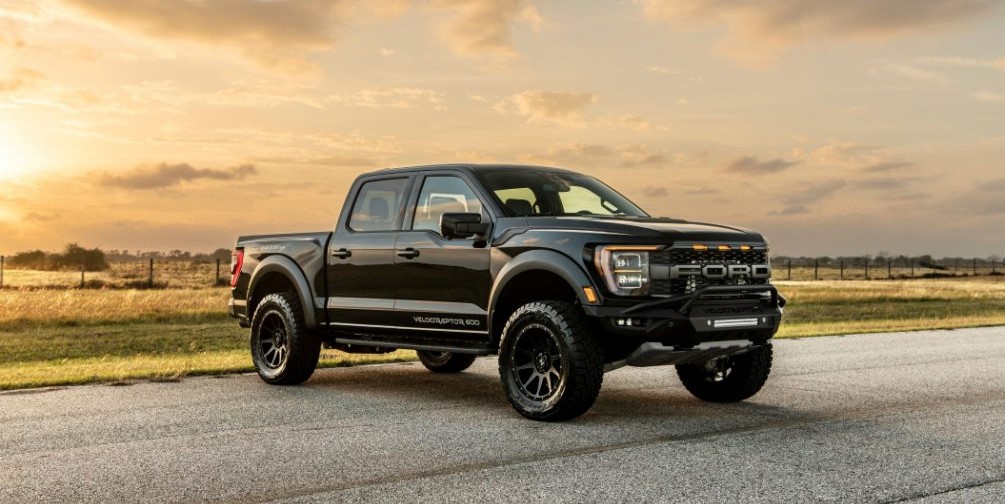
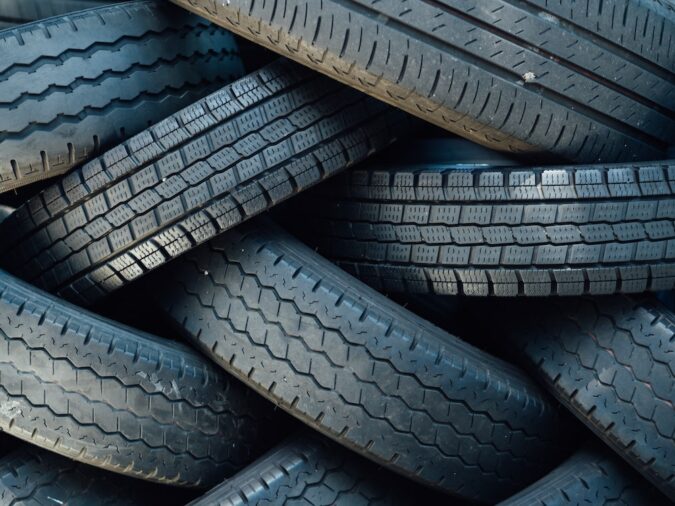
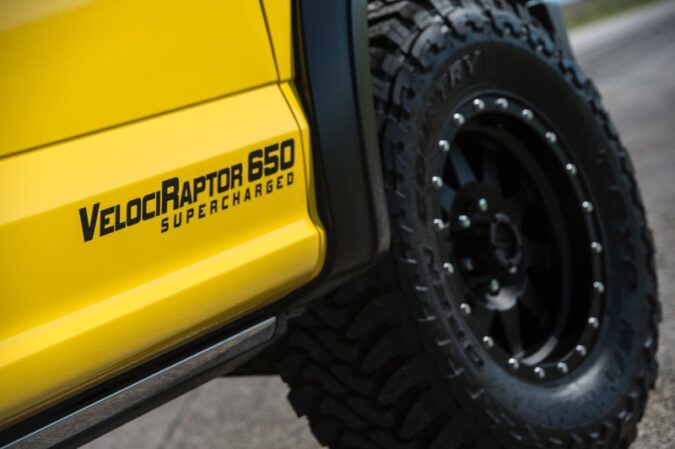
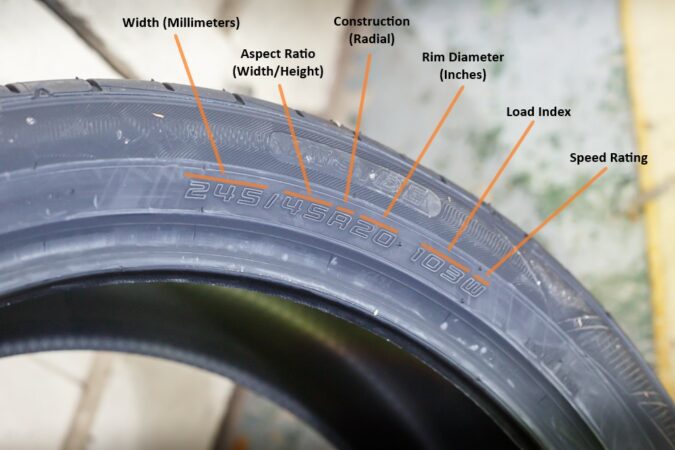
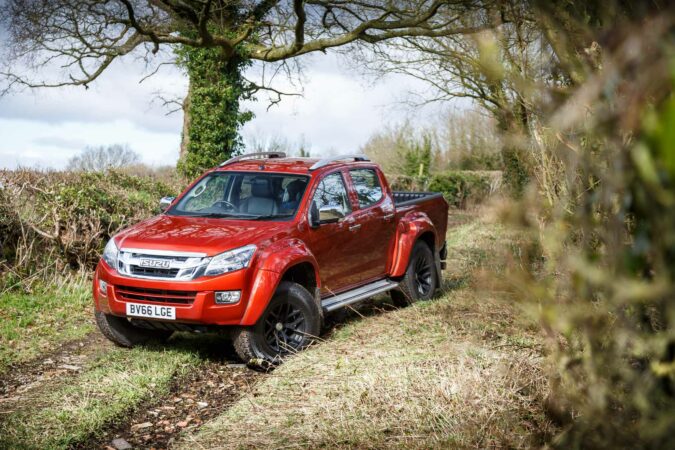
1 comment
I think bigger tires are a good idea on trucks. They will be able to handle more weight and they will be able to go over obstacles that smaller tires wouldn’t be able to.